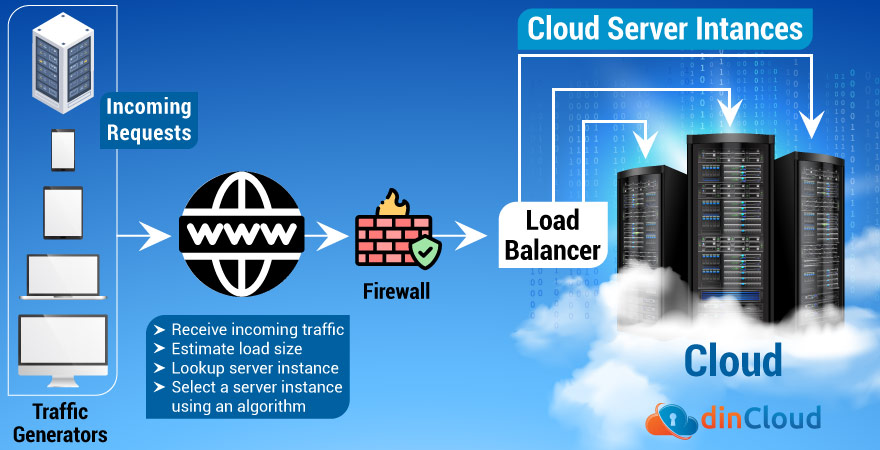Present day end users have become accustomed to the best user experience (UX). A very critical component of this overall experience is wait time between when you sought an information and you ultimately received it.

This metric has a direct correlation with an end user’s experience. The shorter the time, the superior a user’s experience. Now that we have established a baseline, let’s discuss what is load balancing.
What is Load Balancing?
Load balancing is the science of methodically and logically distributing workloads between servers in any network. The workloads may vary depending on various scenarios such as web pages, data queries or even server based applications.
Why Use Load Balancers?
Load balancers are critical in managing network traffic and allocating it to servers that are already not overburdened enough to handle the request. As soon as the algorithm of a load balancer identifies an overburdened server, it will divert the traffic to another server.
Forms of Load Balancers
A load balancer can be deployed in many different ways, let’s highlight some of the major deployment options.
Physical Device
These type of load balancers are physical devices that can be pre programmed with load management algorithms. These need to be installed at the mid tier level, sitting between end users and servers and all network traffic goes through them.
Virtualized Instances
Such load balancers exist as software instances that overlay hardware, but perform all the functions of a physical load balancing device. These load balancers are more flexible and offer more versatility to developers that manage them.
Load Balancing in Cloud Infrastructures
The importance of load balancing is further enhanced in cloud infrastructures. Cloud Service Providers (CSP) like dinCloud invest heavily in the industry’s best load balancers and rely on both hardware and software based ones to deliver an unmatched experience.
Cloud Delivery and Load Balancing
Cloud providers like dinCloud offer a wide array of services over their cloud infrastructure. These core offerings include data, processes and applications. Hence, the importance of efficient load balancing is further enhanced in cloud architectures.
Prompt Data Delivery
Cloud users have to constantly interact with data over the cloud. This may also involve to and fro movement of data from cloud data centers and end user devices, although no data is actually stored over an endpoint device in a cloud environment.
A load balancer will allocate the data movement to the most efficient and available server, at that particular point in time. In this way, the cloud user will be able to interact with data in the least amount of time, thus improving process efficiency.
Cloud Delivered Applications
With the increasing influence of cloud services, such as the ones offered by dinCloud, application delivery over the cloud is constantly rising. A single cloud native application may have hundreds or thousands of sub processes, which are managed by load balancers.
Secondly, applications over the cloud constantly interact with the end user, who is accessing that app over the cloud from a physically dispersed location. It is imperative that a load balancer handles the application workload efficiently and seamlessly.
Benefits of Load Balancing
- Load balancers assign user requests for data, apps or processes to the most promptly available server, minimizing wait times.
- Intelligently programmed load balancers take into account the current workload of a server before assigning any fresh requests.
- Load balancing is a critical component of the overall network optimization process, which ultimately translates into an efficient delivery channel.
- Over the long term, well executed load balancing increases the life span and efficiency of servers, which are a very costly IT hardware.
- Load balancers play an important role in enhancing end user experience in the domains of data and applications.
dinCloud and Load Balancing
Being a premier Cloud Service Provider (CSP), dinCloud always deploys the best IT equipment and hardware for its state of the art cloud infrastructure. Load balancers are no exception to this rule and dinCloud uses a combination of load balancing mechanisms.
An efficient and well executed load balancing ultimately translates into a very superior user experience over dinCloud’s infrastructure, whether it’s your data, processes, workloads or applications that you run over our environment.
Feel free to Contact dinCloud if you have any further questions or clarifications about how we optimally manage and execute load balancing.


